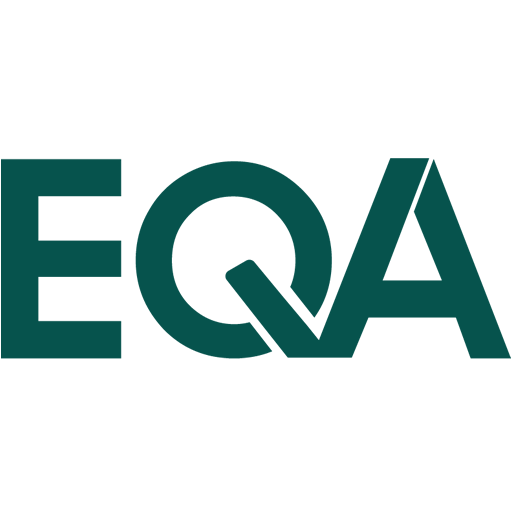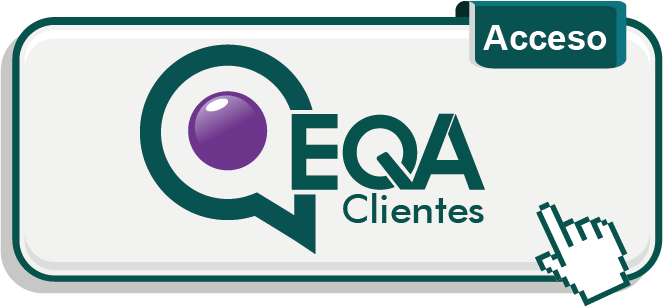
ISO / IEC 27701
Gestión de la Privacidad de la Información
ISO/IEC 27701 certification is intended for organizations that have ISO 27001 certification.
Definition of ISO 27701
ISO 27701 is an extension of ISO 27001, which focuses on information privacy management. ISO 27701 establishes requirements and guidelines for the management of information privacy within an information security management system (ISMS) based on ISO 27001.
Goals of ISO 27701
The main goals of ISO 27701 are to establish an information privacy management framework and provide guidelines to help organizations protect and effectively manage the personal information and privacy of individuals. Some of the specific objectives of ISO 27701 include:
- Protecting the Privacy of Individuals: The primary objective of ISO 27701 is to ensure that organizations protect the privacy of individuals with regard to the processing of their personal information. This involves taking measures to prevent unauthorized disclosure, unauthorized access and other privacy risks to personal data.
- Comply with Privacy Regulations: ISO 27701 helps organizations comply with applicable data privacy laws and regulations, such as the General Data Protection Regulation (GDPR) in the European Union and other privacy laws around the world. By following the standard’s guidelines, organizations can demonstrate their commitment to legal privacy compliance.
- Continuous Improvement: As with other ISO standards, ISO 27701 promotes continuous improvement. Organizations must continually assess and manage privacy risks, implement appropriate controls, and regularly review their privacy performance. This ensures that the privacy of the information is effectively maintained over time.
- Build Trust: Certification to ISO 27701 can build trust among customers, business partners, and other stakeholders. It demonstrates that an organization takes data privacy seriously and has implemented robust controls to protect it.
- Integrated Management: ISO 27701 effectively integrates with ISO 27001, allowing organizations to manage both information security and information privacy in a coherent management framework. This simplifies the management and alignment of efforts in both areas.
- Minimize Risks of Privacy Breaches: By proactively identifying and managing privacy risks, ISO 27701 helps organizations reduce the likelihood of privacy breaches that can have negative impacts on the organization’s reputation and trust.
The objectives of ISO 27701 focus on establishing a structured and systematic approach to protecting information privacy and ensuring legal compliance, while promoting continuous improvement in the management of personal data privacy.
Benefits of ISO 27701
Implementing ISO 27701 offers several significant benefits for organizations seeking to effectively manage the privacy of personal data and information. These benefits include:
- Legal and Regulatory Compliance: ISO 27701 helps organizations comply with applicable data privacy laws and regulations around the world, such as the General Data Protection Regulation (GDPR) in the European Union. Complying with these laws is essential to avoid legal sanctions and fines.
- Improve Reputation: ISO 27701 certification demonstrates the organization’s commitment to information privacy. This can increase the trust of customers, business partners and other stakeholders, which in turn can improve the reputation of the organization.
- Effective Risk Management: ISO 27701 helps organizations identify, assess, and effectively manage information privacy risks. This reduces the likelihood of privacy breaches and their negative consequences.
- Continuous Improvement: The standard encourages continuous improvement in the management of personal data privacy. Organizations regularly review and update their privacy practices and controls to keep up with changing risks and regulations.
- Integration with ISO 27001: ISO 27701 integrates with ISO 27001, enabling integrated management of information security and information privacy. This simplifies the management of both aspects and ensures greater consistency in security and privacy efforts.
- Operational Efficiency: By implementing strong privacy practices and controls, organizations can minimize the risk of operational disruptions caused by privacy breaches and related issues.
- Cost Reduction: Preventing privacy breaches and effectively managing privacy risks can reduce costs associated with incident response, legal fines, and lost customers.
- Competitiveness: Having an ISO 27701 certification can give an organization a competitive advantage in the market as it demonstrates its commitment to information privacy and security.
- Protection of the Rights of Individuals: ISO 27701 focuses on protecting the rights of individuals in relation to the processing of their personal data. This helps to generate trust and respect towards the organization on the part of interested parties.
- Facilitates Business Relationship Management: ISO 27701 certification can be a contractual requirement or an advantage for establishing and maintaining business relationships with partners and customers who value information privacy.
ISO 27701 provides several benefits ranging from legal compliance and reputation enhancement to effective risk management and operational efficiency. Helps organizations comprehensively address information privacy and strengthen their personal data management practices.
Frequently Asked Questions
Stages of the ISO 27701 Standard
ISO 27701 establishes requirements and guidelines for information privacy management within an information security management system (ISMS) based on ISO 27001. The stages for implementing ISO 27701 are similar to those of ISO 27001, with a specific focus on information privacy. The key stages for the implementation of ISO 27701 are described below:
- Commitment of Senior Management:
– Identify the need to implement ISO 27701.
– Obtain the commitment of senior management for the information privacy management project.
- Establish the Scope of the Privacy ISMS:
– Define which information assets and processes of the organization are covered by the privacy ISMS.
– Determine the scope limits of the privacy ISMS.
- Beginning of Privacy Risk Analysis:
– Identify and evaluate risks related to the privacy of information, including personal information.
– Determine threats, vulnerabilities, and potential impact on data privacy.
- Definition of the Information Privacy Policy:
– Develop an information privacy policy that establishes the general principles and objectives of the privacy ISMS.
- Planning Privacy Controls:
– Define and plan the implementation of information privacy controls, such as technical and organizational measures to protect personal data.
- Implementation of Privacy Controls:
– Implement the privacy controls defined in the previous stage.
– Ensure processes and systems are configured to protect information privacy.
- Residual Privacy Risk Assessment:
– Reassess risks after implementing privacy controls.
– Ensure that residual risks are within acceptable limits.
- Internal Privacy Audit:
– Conduct internal audits to evaluate compliance with ISO 27701 and implemented privacy controls.
– Identify areas of improvement.
- Review by the Privacy Directorate:
– Senior management reviews the performance of the privacy ISMS and internal audits.
– Decisions are made to improve the privacy ISMS as necessary.
- External Privacy Certification:
– Hire a third-party certification body to perform an audit and issue a certification if the privacy requirements of ISO 27701 are met.
- Maintenance and Continuous Improvement of Privacy:
– Continue to monitor and improve privacy ISMS over time.
– Respond to changes in privacy risks and requirements.
These stages ensure that an organization can effectively manage information privacy and meet ISO 27701 requirements to protect personal data. The standard is based on the continuous improvement approach, which means that the cycle of implementation and improvement is repeated over time to maintain the effectiveness of the privacy ISMS.
More information about the structure of the ISO 27701 Standard.
Structure of Standard 27701
ISO 27701 has a similar structure to other ISO standards and is based on the common High-Level Structure (HLS) format that is used to facilitate integration with other management system standards, such as ISO 27001 (security of information) and ISO 9001 (quality management). The structure of ISO 27701 consists of several sections, and an overview of its structure is presented here:
- Introduction:
– This section provides an overview of the standard and its purpose. Describes the context and importance of information privacy management.
- Objective and field of application:
– Defines the objectives of ISO 27701 and specifies its scope of application. It indicates that the standard applies to organizations seeking to manage information privacy and expands the implementation of an ISMS based on ISO 27001.
- Normative references:
– This section lists standards and reference documents related to ISO 27701. It may include other relevant ISO standards, privacy laws and regulations.
- Terms and definitions:
– Defines the key terms and definitions used in the standard. This ensures a common understanding of concepts and terminology related to information privacy.
- Organization context:
– As in ISO 27001, this section requires the organization to identify its context, relevant stakeholders, and their requirements and expectations related to information privacy.
- Leadership and commitment:
– Describes the leadership and commitment requirements of senior management related to information privacy, including the definition of roles and responsibilities.
- Planning:
– This section focuses on planning privacy management processes, including identifying privacy risks and opportunities.
- Support:
– Details requirements related to senior management support, staff competency, and resources needed to implement and maintain the privacy ISMS.
- Operation:
– This section focuses on the implementation of controls and processes to protect the privacy of information.
- Performance evaluation:
– Describes the requirements to evaluate and measure the performance of the privacy ISMS and how internal audits should be carried out.
- Improvement:
– This section addresses continuous improvement of the privacy ISMS, including taking corrective and preventive actions to address nonconformities and identified risks.
The structure of ISO 27701, being aligned with the HLS, facilitates integration with other management system standards, which can simplify the management of information privacy and its integration with information security and other aspects of the business management.
More information about the Integration of ISO 27701 with ISO/IEC 27001.
The PDCA cycle in ISO 27701
The PDCA Cycle (Plan, Do, Check, Act) is a continuous improvement approach that can be applied in the implementation and management of management systems, including the ISO 27701 standard for information privacy. Although not explicitly mentioned as a cycle in ISO 27701, PDCA principles can be applied at all stages of the information privacy management process. The following describes how the PDCA cycle relates to ISO 27701:
- Plan (P):
– At this stage, the organization must plan its information privacy management system (IMS) based on ISO 27701. This includes the identification of personal information assets, the assessment of privacy risks and the definition of policies and privacy objectives. This stage is related to the “Planning” phase of the PDCA cycle.
- Do (D):
– Once privacy measures have been planned, the organization must implement them. This includes implementing privacy controls, training staff, and managing processes to protect personal data. This stage relates to the “Do” phase of the PDCA cycle.
- Check (C):
– At this stage, continuous evaluation and monitoring of the SGPI is carried out to ensure that it is working as planned. Internal audits are performed and privacy-related key performance indicators are measured. This stage is related to the “Verify” phase of the PDCA cycle.
- Act (A):
– Based on the results of internal evaluations and audits, the organization takes measures to correct and improve the SGPI according to the findings. This may include implementing corrective and preventive actions to address identified deficiencies or risks. This stage relates to the “Act” phase of the PDCA cycle.
The PDCA approach is repeated continuously over time in information privacy management. Each time the cycle is completed, feedback is given to make additional adjustments and improvements to the SGPI to maintain effectiveness in protecting the privacy of personal data and comply with the requirements of ISO 27701. Continuous improvement is a fundamental aspect in managing information privacy to adapt to changes in technology, regulation and privacy risks.
More information about the General Data Protection Regulation.
Contact us for more information about ISO 27701
Follow us
Tel. +34 913 078 648
